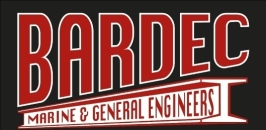Galvanising
Patents were taken out in 1837 in both England and France for hot dip galvanising; the procedure through which a protective zinc coating is obtained by dipping cleaned iron or steel into a bath of molten zinc.
Galvanised steel has been used for over 100 years in contact with food stuffs for both animal and human consumption and in contact with potable waters. It is handled every day without ill effect by operatives in galvanising plants.
Zinc is a necessary trace element in human, animal and crop nutrition.
The world health organisation actually recommends a human intake of 15milligrams of zinc daily.
Zinc compounds are used in medicaments and also skin dressings
A Galvanised coating is not in essence a hazardous substance however the following points should be considered;
· Storage
A galvanised product is not a fire or explosion hazard, it may be stored in normal conditions either indoors or outdoors.
· Chemical Reactivity
A galvanised coating will react with acids or strong alkalis the result is hydrogen being produced. This could form and explosive mixture with air if a galvanised coating were to be stripped with a strong acid under poorly ventilated conditions.
· Inhalation
Zinc has a boiling point of 906ºC. If this temperature is exceeded, as it will be if the galvanised product is flame cut or welded, or for example in a fire the result is the generation of zinc oxide. If large quantities of this substance are inhaled then a indisposition (albeit temporary) which is known as metal fume fever may be caused. The worst case scenario is for symptoms not dissimilar to those of 24 hour “flu” may be experienced. There are no on-going effects.
· Ingestion
The ingestion of small quantities of zinc is more likely to be beneficial than harmful.
· Cuts and abrasions
On handling galvanised products of cut or abrasion occurs then normal first aid procedures are to be followed.
Our galvanising is to BSENISO 1461.
The benefits:
Galvanising is the application of zinc to mild steel in order to provide a strong and protective coating.
The finish is resilient to aggressive handling, which has been proven in the last 150years to provide a long lasting, tough low maintenance coating to mild steel.
Galvanised coating is recyclable, enabling the steel to have an almost continuous life span.
The Process:
Preparation:
All materials are checked to ensure there are no sealed tubes, blind corners or potentially explosive areas given that they will be subjected to extremely high temperatures.
The Plant:
The galvanising plant consists of:
Two molten zinc baths – 1 @ 6700 x 1350 x 2400
1 @ 3600 x 800 x 100
They are gas heated via twin velocity burners and are thermostatically controlled at circa 450ºC, a recording temperature chart and alarm systems are in place.
A degreasing tank – 1 @ 6700 x 1200 x 2400
Four acid pickling tanks - 1 @ 6700 x 2400 x 2400
2 @ 6700 x 1200 x 2400
1 @ 3600 x 2400 x 1200
A pre-flux tank recycled heating to about 60º - 1 @ 6700 x 1350 x1200
A pre-flux tanks gas heated – 1 @ 3600 x 1200 x 1200
Two over head travelling cranes, twin hoist with a capacity of 3.2 tonnes each.
The Process:
|
DEGREASE |
|
|
|
ACID PICKLE |
|
|
|
RINSE |
|
|
|
FLUX |
|
|
|
GALVANISE |
Treatment:
The products to be galvanised are wired to beams at approx 30degree angles to enable draining prior to being immersed in an acid degreasing agent to remove any light grease and cutting oil.
The products are then immersed into hydrochloric acid at an ambient temperature to scour the steel surface and eradicate all mill scale and dust. The acid contains an inhibitor to avoid over pickling.
The products are rinsed to remove acid residues; they are then immersed in flux to ensure efficient flow of zinc of its surfaces.
Hot Dip Galvanising:
The products are immersed in molten zinc at 450C until they reach the same temperature as the zinc. They are then gradually withdrawn allowing excess zinc to drain off. They are then quenched or air cooled.
The Results:
Galvanised coatings can differ in appearance dependant on the composition of the steel substrate being used. Visually it can range from bright and shiny to a dull grey colour.
The high level of protection is unaffected even if the colour differs. The process safeguards mild steel against corrosion in an external UK environment for between 40 and 70 years. Internally it would protect for in excess of 100 years.


